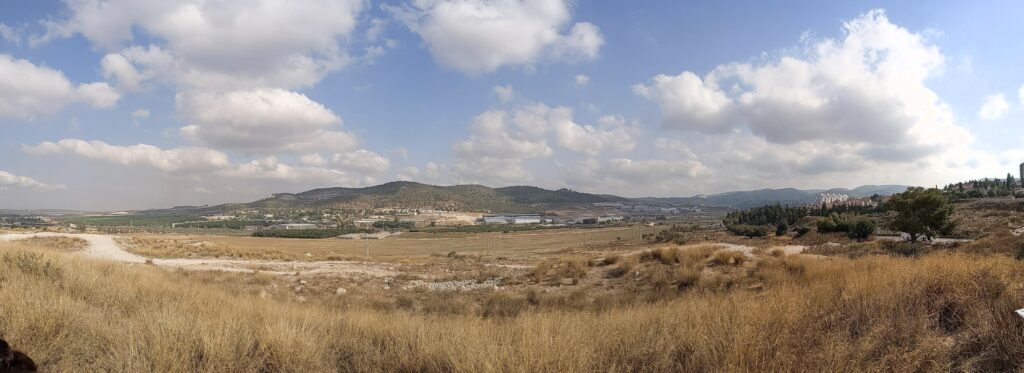
Just west of the Hill Country of Judah there is a stretch of lower hills and wide valleys that often became a major point of entry for merchants, traveler’s and invading armies, such as Philistines on the Coastal Plain, and the larger kingdoms of Egypt, Assyria, and Babylon. These lowlands, Shephelah in Hebrew, held the first and last lines of defense for the people of Judah, and as such are home to some of the most incredible stories of God’s power in the land of Israel, and some of the most crushing defeats when Israel and Judah turn their back on God.
Coincidentally, the chronological account of the major events that take place in the Shephelah happen to start in the north, and work their way south through the series of east/west facing valleys that act as doorways into the land of Judah. As such I will work my way though the valleys from north to south, following the Biblical and historic accounts.
At the furthest reaches of the northern Shephelah, The Aijalon valley dominates the landscape. This valley serves as the major route west from Jerusalem and is most well known from the book of Joshua
At that time Joshua spoke to the LORD in the day when the LORD gave the Amorites over to the sons of Israel, and he said in the sight of Israel,
“Sun, stand still at Gibeon,
and moon, in the Valley of Aijalon.”
And the sun stood still, and the moon stopped,
until the nation took vengeance on their enemies.
Is this not written in the Book of Jashar? The sun stopped in the midst of heaven and did not hurry to set for about a whole day.
Joshua 10:12-13
Unfortunately, my travels have not allowed me ample time to collect photos from Aijalon, but you can see the place where Joshua made this declaration in a previous post.
Moving southward we come to the Sorek Valley, where the infamous strong man Samson lived. In fact, from the Sorek, you can see the majority of Samson’s story.
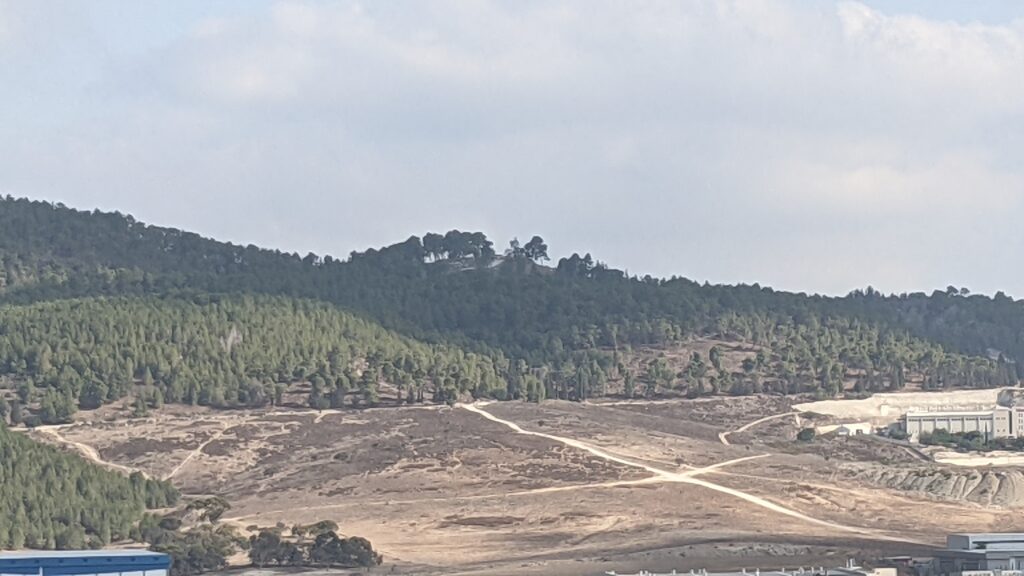
Tell Zorah (where there’s a break in the trees) 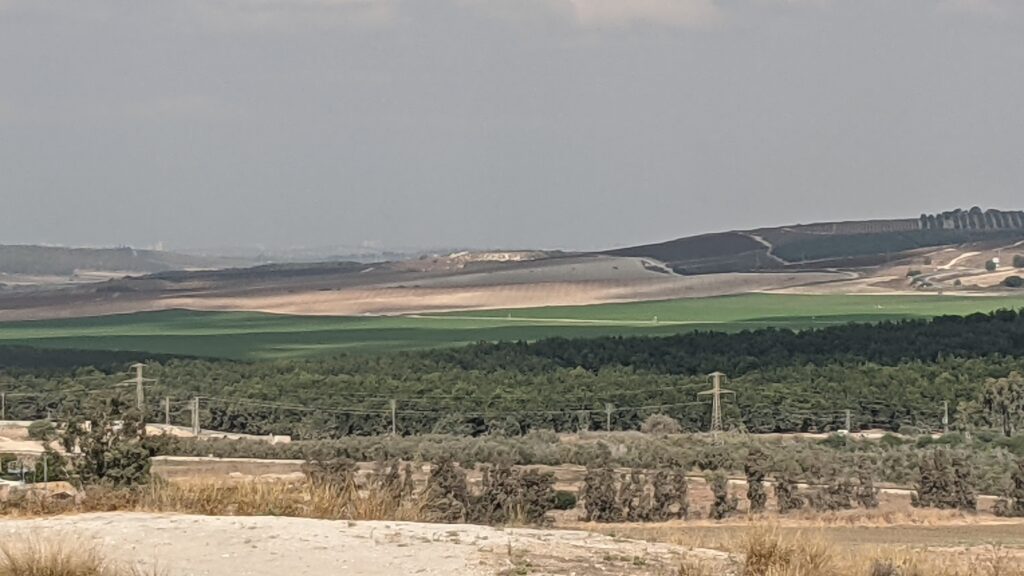
The Remains of Timnah and the Philistine Plain 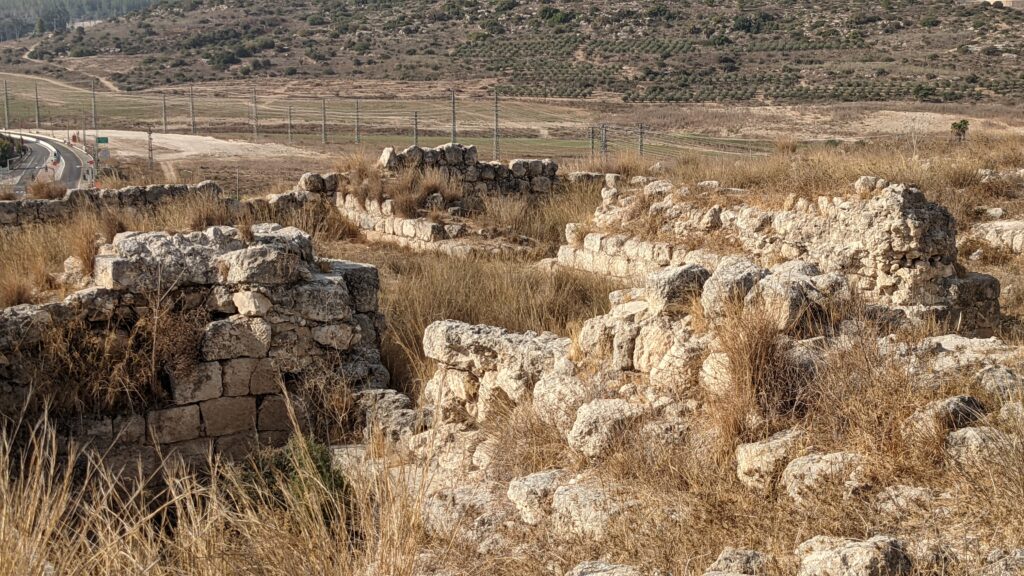
Some remains of Beit Shemesh 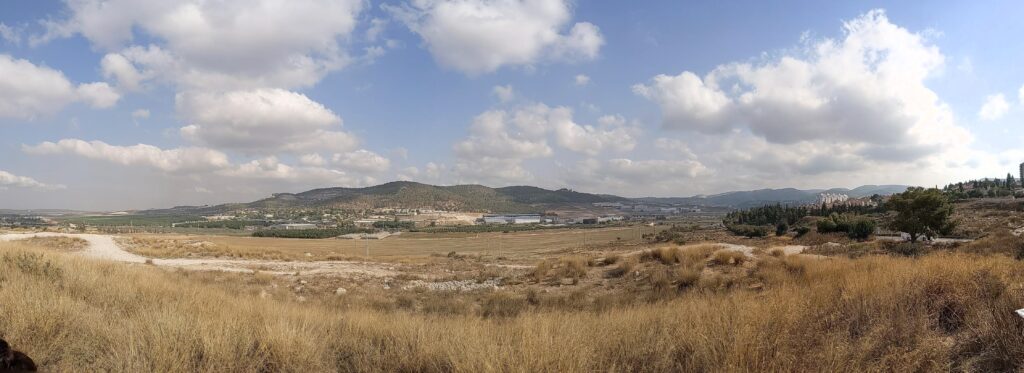
The Sorek Valley, Zohar to the Right, and Timnah to the Left
Samson was born in the town of Zorah, in the eastern part of the valley) under miraculous circumstances. His parents were visited by an angel, and told to keep him as a Nazirite, a person set apart in service to God by keeping certain vows – such as not drinking wine (or eating anything with grapes), not touching a carcass, and not cutting his hair. In return Samson was granted super human strength. When he grew older he visited the nearby Philistine town of Tinmah, in the western part of the valley, famous for its grapes and vineyards (strike one), where he met a Philistine woman and decided to marry her. If that sound like a bad idea, that’s because it is, and it kicks off a series of events that spiral out of control and eventually lead to Samson’s death, along with the destruction of several thousand Philistines. Here in this valley, Samson tied the tails of foxes to torches and burned all the fields. Here he encountered Delilah and ended up loosing his hair and his strength.
Perhaps the most recognizable story of Samson, the slaying of a thousand men with the jawbone of a donkey, takes place further up the Sorek into the Hill Country, at a placed called Lehi. Samson spent some time hiding there. There are dozens of little towns in the Judean Hill Country that are just isolated enough that most armies would ignore them. Many are situated on steep hillsides, where travel for large groups of people would be extremely difficult. It took the philistines threatening these towns for Samson to be turned over to them, and when he was, he put up a fight and killed them all. At the end of this battle, God provided Samson with a spring erupting from the hillside. Altogether, Samson’s story is a tragic one, the story of an ungodly man used by God to do amazing things, but never reaching his full potential.
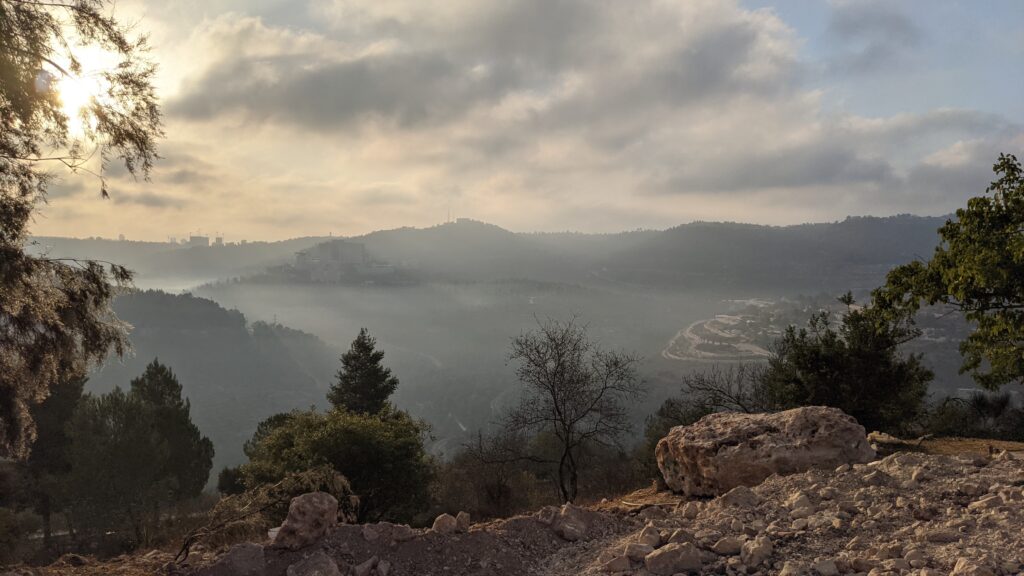
The Judean Hills 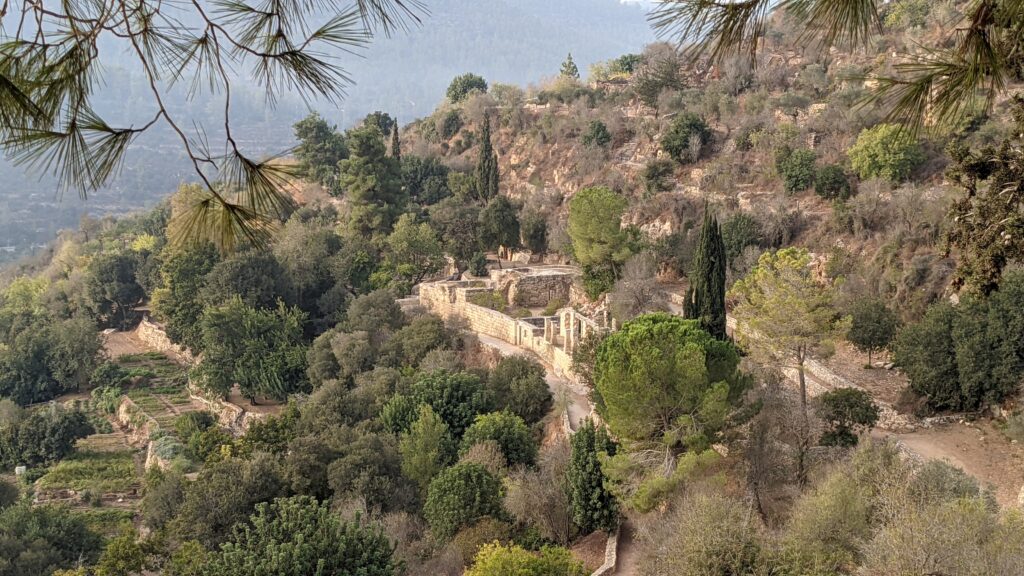
A town on the Edge of the Mountain 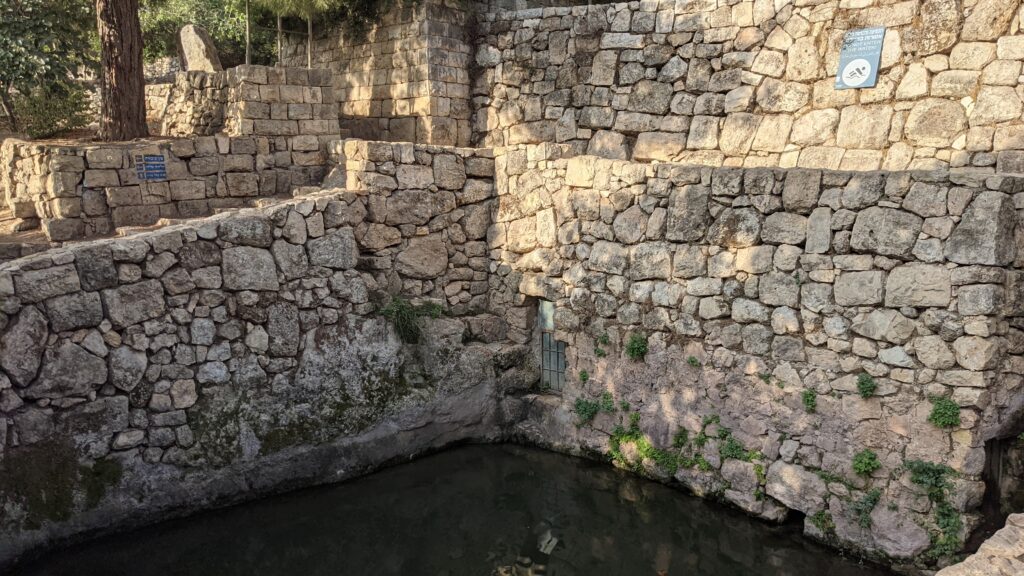
A Collection Pond for a Natural Spring
Just south of the Sorek sits the Valley of Elah, most well known for the battle between David and Goliath. 1 Samuel 17 describes the battle as taking place in the Valley of Elah between Socoh and Azekah, and from the top of Tel Azekah there is a magnificent veiw of the battle field.
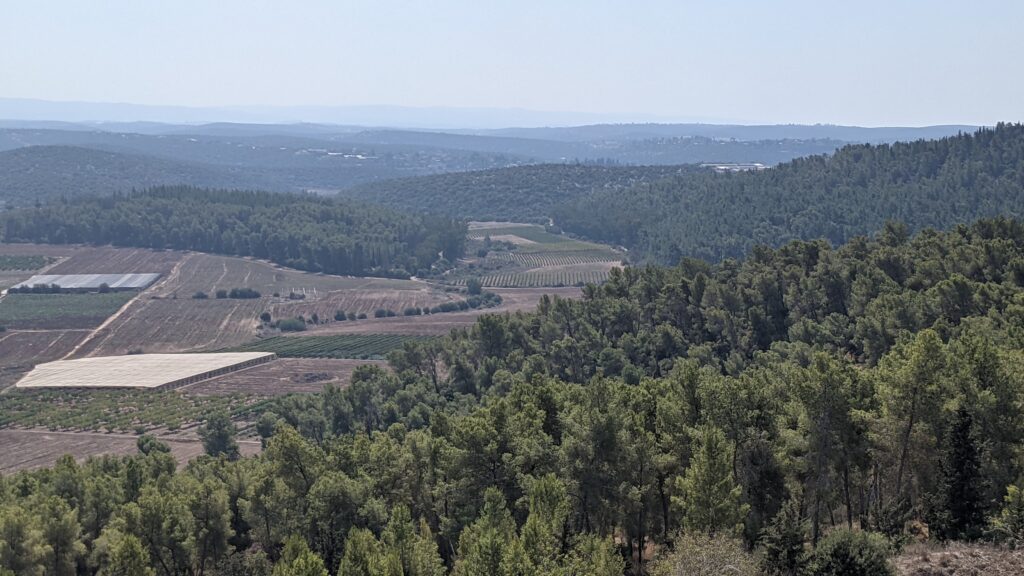
David actually shares many of the traits Samson had – they both killed lions, they both had the Spirit of God rushing upon them, and they both had infamous problems with women. Where David and Samson differ is that David actively seeks God, where as Samson seems to care little for God’s calling on his life.
When David faces Goliath, he’s not who Goliath is expecting. Goliath is a giant, listed as “six cubits and a span” or roughly 9′ 6″ tall, and is the champion of the Philistine god Dagon, and he is expecting King Saul, the giant of Israel, anointed champion of God, who stands “a head taller than everyone” (probably around 6′ 6″), to come and face him. Saul also knows this, and tries to get David to wear his armor, perhaps to claim the glory of slaying the Philistine giant for himself. However David shows up in his shepherd’s tunic, with his bag, staff and sling, no armor, no sword, but very much armed and ready to go. Slinging stones could often be deadlier than arrows, especially in the hand of a trained slinger. While David certainly was skilled, he does not claim that the battle will be one by his own skill, but by the will and power of God. It’s not David’s victory when Goliath falls, it is God’s. David, called “a man after God’s own heart” goes on to become the King of Israel, and the ancestor of the Messiah.
David’s grandson, Rehoboam, would go on to fortify many of the cities in the Shepelah. Among these are:
- Azekah, overlooking the Elah Valley,
- Gath, a former Philistine city, home of Goliath, at the entrance to the Elah Valley,
- Mareshah, which sits to the south in the Guvrin Valley, and became a prominent city,
- And Lachish
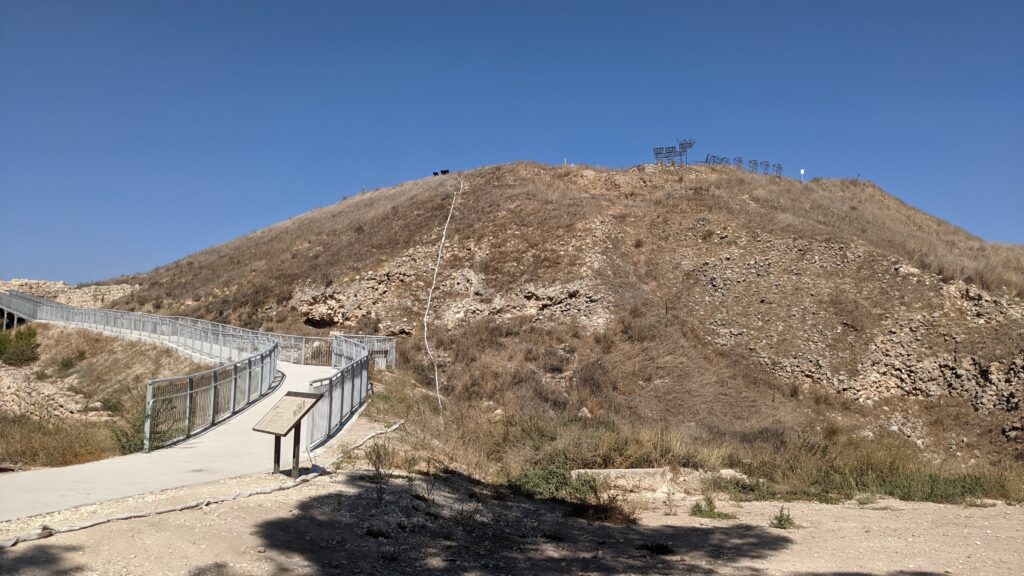
Tel Lachish 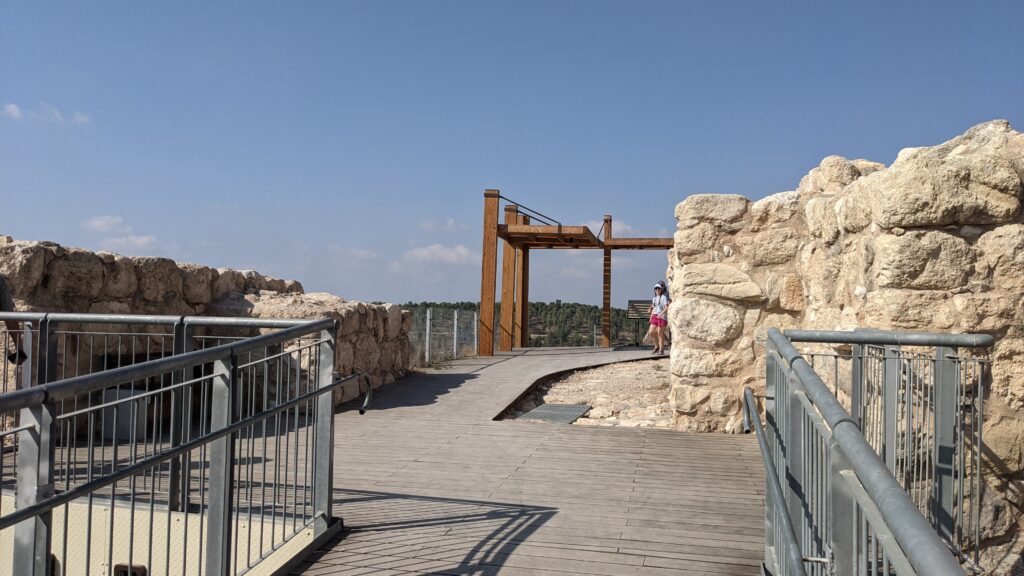
The Entrance to Lachish 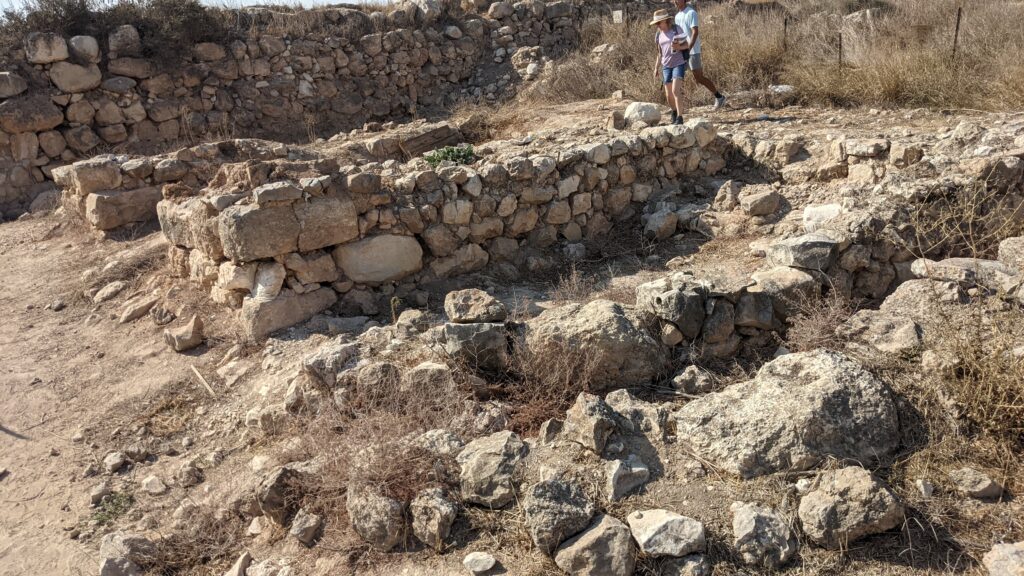
The Gates of Lachish, what’s left of them. 
The Old Palace/Stonghold at Lachish 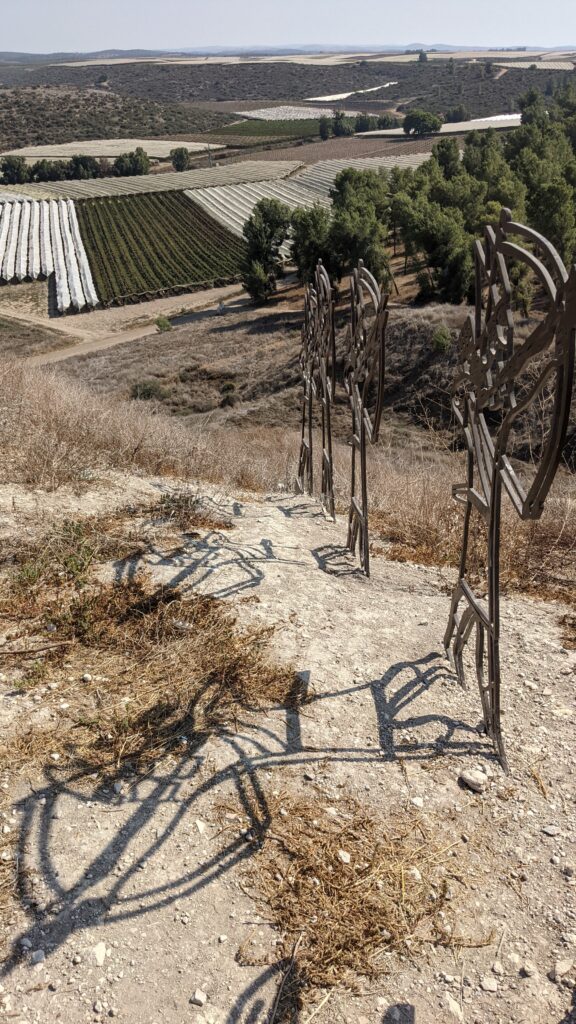
The Assyrian Siege Ramp 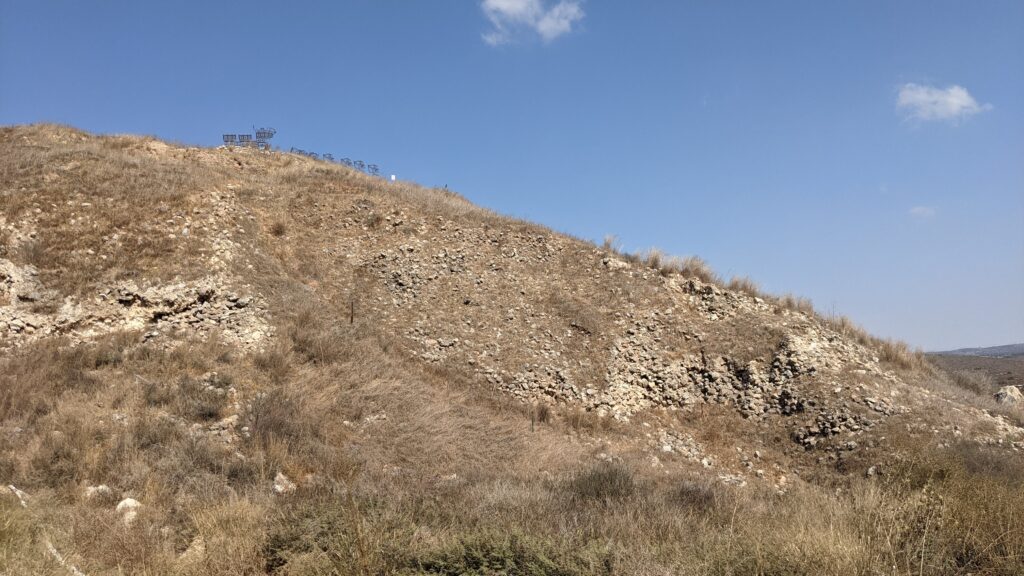
The Assyrian Siege Ramp
Lachish is better understood from the annals of history, rather than the Bible, but it does serve as an fascinating connection point between both. The Bible remarks:
In the fourteenth year of King Hezekiah, Sennacherib king of Assyria came up against all the fortified cities of Judah and took them. And Hezekiah king of Judah sent to the king of Assyria at Lachish, saying, “I have done wrong; withdraw from me. Whatever you impose on me I will bear.” And the king of Assyria required of Hezekiah king of Judah three hundred talents of silver and thirty talents of gold.
2 Kings 18:13-14
Scripture describes Sennacherib as destroying all the fortified cites of Judah, which would likely include all those places built up by Rehoboam, Lachish is apparently the last place he attacked, as that is where Hezekiah sends his messenger. The historical record, largely recorded by Sennacherib himself, goes into much greater detail.
Sennacherib marched his army down the Coastal Plain, and then worked his way into the Shephelah at several points to destroy the cities there. At Azekah he mentions how the city was situated “like an eagle’s nest on the cliffs” with walls “like daggers reaching to the heavens” before describing how he built a ramp to its gate, and smashed the gate in with a battering ram. At this time the city of Mareshah sent a letter to the general at Lachish on a piece of pottery which states, “Let the General know that we are watching out for the fire signals from Lachish… Because we can no longer see Azekah.” Sennacherib later destroyed lachish much the same way he did with Azekah, by building a ramp then burning the city to the ground. The battle was so epic he carved a giant relief of it and wrote about it on what is known as Sennacherib’s Prism, saying he locked up Hezekiah in Jerusalem “like a bird in a cage.” Hezekiah had no choice but to surrender. However, following Hezekiah’s surrender, Sennacherib besieges Jerusalem.
Following this devastation, Hezekiah seeks God, and even when it seems like all hope is lost, Hezekiah’s faith and prayer leads to a miracle.
And that night the angel of the LORD went out and struck down 185,000 in the camp of the Assyrians. And when people arose early in the morning, behold, these were all dead bodies. Then Sennacherib king of Assyria departed and went home and lived at Nineveh.
2 Kings 19:35-36
The Shephelah is a place where battles were fought, faith was tested, and miracles took place. The stories from this region illustrate how faith and trust in God can change the outcomes of the battles ahead of us. From stopping the Sun and the Moon, to defeating Giants, to sending away entire armies. Imagine what God could do with you if you trust Him.

Janet M
Janet M.